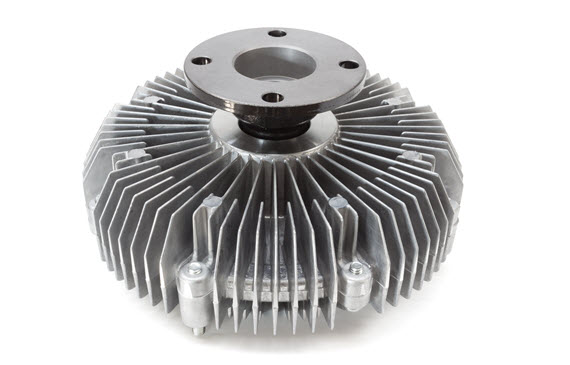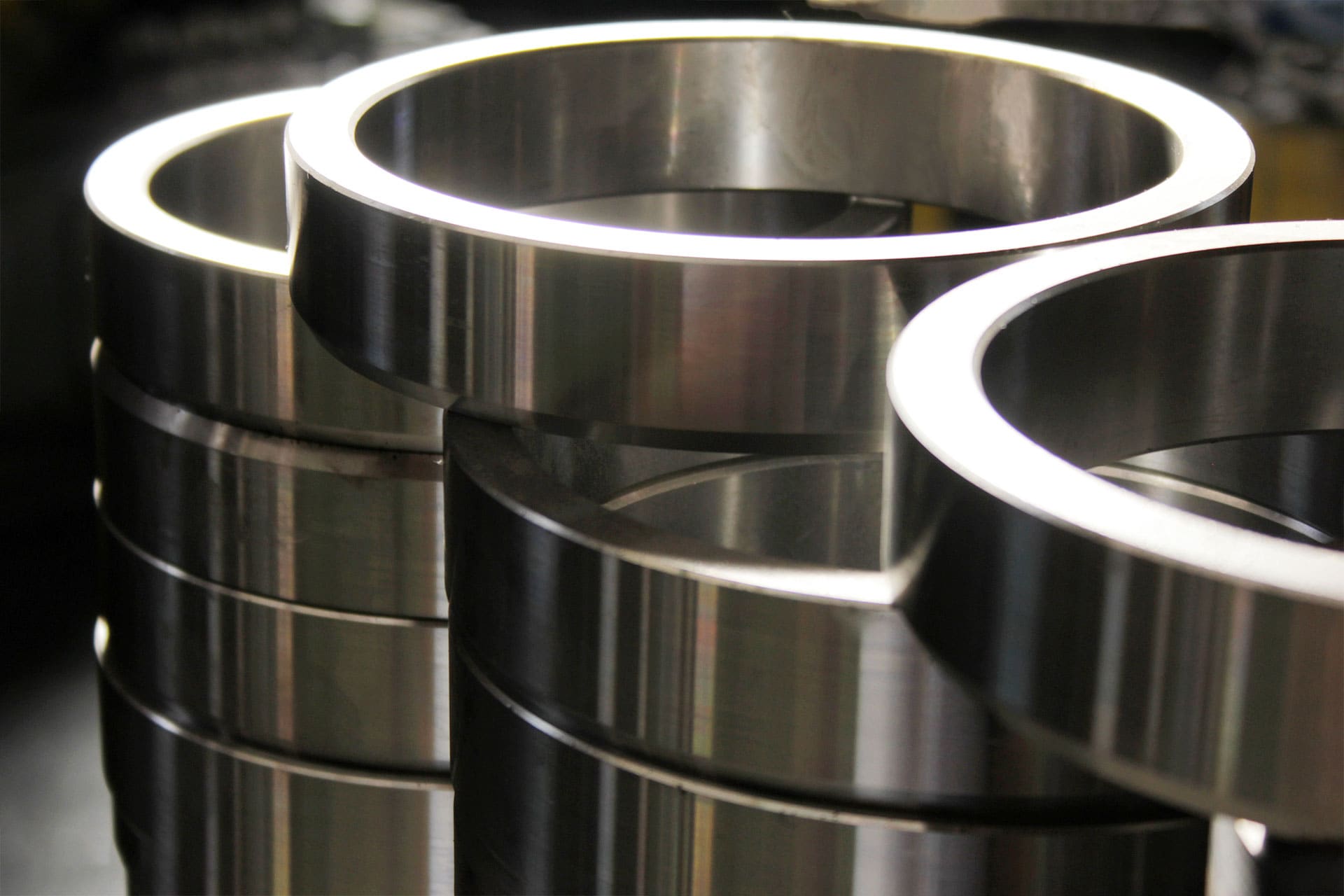Revealing the Advantages and Practical Utilizes of Aluminum Castings in Today's Market
Aluminum castings have actually ended up being significantly pertinent in different sectors because of their distinct characteristics. Their light-weight nature and resistance to rust make them ideal for requiring applications. Additionally, the superior strength-to-weight ratio uses considerable advantages in style and manufacturing. As sectors proceed to explore their potential, the full range of aluminum castings' applications and benefits remains to be totally revealed. What exists ahead for this flexible material?
The Lightweight Benefit of Light Weight Aluminum Castings
Although lots of products are used in manufacturing, aluminum castings stick out primarily due to their lightweight properties. This particular makes aluminum castings an attractive selection for various markets, particularly in aerospace and auto applications, where weight decrease is necessary for improving fuel effectiveness and performance. The lightweight nature of aluminum allows manufacturers to create elements that are simpler to manage and install, eventually reducing labor prices.
The ability to generate complicated forms without substantial weight fines enables developers to innovate while keeping structural stability. Aluminum castings can effectively replace much heavier materials, bring about significant cost savings in shipping and functional costs. Their light-weight advantage likewise adds to enhanced product durability, as lighter elements frequently bring about reduced deterioration on machinery. In general, the lightweight residential or commercial properties of aluminum spreadings offer manufacturers with an one-upmanship, promoting advancements in item style and effectiveness throughout different fields.

Extraordinary Rust Resistance
Aluminum castings have an all-natural resistance to oxidation, which considerably boosts their longevity in different atmospheres. This intrinsic property not just adds to their sturdiness but likewise aligns with the lightweight advantage that light weight aluminum supplies. As a result, aluminum castings are progressively recognized for their phenomenal rust resistance in numerous applications.

Naturally Resistant to Oxidation
One of the standout attributes of light weight aluminum castings is their remarkable deterioration resistance, which comes from a natural oxidation process. When subjected to air, light weight aluminum responds to develop a slim, safety layer of aluminum oxide. This layer serves as an obstacle versus further oxidation and safeguards the underlying steel from harsh aspects such as moisture and salts. Unlike other metals, this oxide layer is self-repairing; if harmed, it quickly reforms when revealed to air. This one-of-a-kind property improves the longevity of light weight aluminum spreadings in various atmospheres, making them optimal for applications in industries such as aerospace, automotive, and marine. As a result, the all-natural resistance to oxidation significantly decreases upkeep expenses and boosts the dependability of aluminum spreadings sought after problems.
Light-weight Durability Benefit
The light-weight nature of aluminum spreadings contributes significantly to their resilience, making them a helpful selection in numerous industries. This exceptional resilience is mostly credited to light weight aluminum's natural resistance to deterioration, which is boosted even more with anodizing and various other surface treatments. Unlike numerous steels, aluminum does not rust; rather, it develops a protective oxide layer that guards it from ecological damages. This property is particularly beneficial in industries such as auto and aerospace, where weight reduction is essential without endangering stamina. In addition, the longevity of light weight aluminum spreadings minimizes maintenance costs and replacements, giving financial benefits in time. Subsequently, their light-weight toughness and deterioration resistance position light weight aluminum spreadings as an exceptional material for contemporary manufacturing applications.
Superior Strength-to-Weight Ratio
An impressive characteristic of light weight aluminum spreadings is their premium strength-to-weight ratio, which makes them very preferable in numerous applications. This intrinsic residential property enables aluminum spreadings to endure significant stress while staying lightweight, an essential aspect in industries such as aerospace, auto, and manufacturing. Engineers frequently favor aluminum spreadings for components that require both sturdiness and lowered weight, improving fuel performance and efficiency.
The high strength-to-weight ratio likewise facilitates the design of intricate shapes and frameworks, making light weight aluminum spreadings flexible for facility applications. In addition, the capacity to maintain structural stability under challenging conditions guarantees longevity and integrity in items, from airplane frameworks to vehicle components. This benefit adds to the growing fad of using aluminum spreadings in cutting-edge designs, inevitably bring about improved functionality and efficiency throughout diverse markets. The remarkable strength-to-weight ratio of light weight aluminum spreadings places them as a critical product in modern design and production.
Cost-Effectiveness in Production
Cost-effectiveness in aluminum casting production is mostly achieved through decreased material waste and efficient production processes. By optimizing layouts and using innovative strategies, manufacturers can minimize excess material usage while keeping high quality standards. This method not only reduces manufacturing prices yet additionally adds to much more lasting methods within the market.
Reduced Material Waste
Minimizing material waste in aluminum casting processes significantly boosts manufacturing performance. By optimizing the design and production methods, business can lessen excess scrap and boost resource application. This decrease in waste not just lowers material expenses but also adds to an extra lasting production model. The capability to recycle light weight aluminum further supports cost-effectiveness, enabling manufacturers to reclaim and reuse materials without endangering quality. As the industry significantly concentrates on sustainability, lowered material waste lines up with ecological objectives while concurrently improving profitability. Inevitably, efficient usage of raw materials strengthens the competitive position of services out there, making light weight aluminum spreadings a positive choice in numerous applications. The strategic technique to lessening waste shows a commitment to both financial and environmental responsibility.
Effective Production Processes
While traditional manufacturing processes can sustain substantial expenses, aluminum spreading uses a much more reliable alternative that improves total manufacturing success. This method minimizes product waste and permits precise control over the manufacturing procedure, resulting in minimized labor and functional prices. The ability to produce complicated forms with less actions better streamlines manufacturing, adding to much shorter lead times. Furthermore, light weight aluminum's light-weight nature and superb thermal conductivity enable power savings during production and in the final application. By utilizing modern-day spreading modern technologies, manufacturers can achieve greater throughput without giving up quality. Light weight aluminum casting stands out as an economical service, making it an appealing alternative for companies aiming to enhance their production procedures in today's competitive market.
Convenience Throughout Industries
Light weight aluminum spreadings demonstrate exceptional flexibility across various sectors, as they can be tailored to satisfy certain demands and applications. In the automotive market, light weight aluminum castings are made use of in engine blocks, transmission housings, and wheels, using lightweight yet long lasting solutions that enhance gas performance. The aerospace sector also profits from light weight aluminum castings, using them in architectural elements and engine components as a result of their strength-to-weight ratio.
In the durable goods field, manufacturers utilize light weight aluminum castings for items ranging from cooking equipment to furniture, providing both visual appeal and performance. The electronics market uses aluminum spreadings for housings and heat sinks, making sure reliable thermal administration. Additionally, the building field leverages light weight aluminum spreadings for building elements and structural components, boosting durability and layout versatility. This broad applicability highlights aluminum castings as an essential source, satisfying the varied requirements of various markets while maintaining high performance and dependability.
Sustainability and Environmental Influence
As markets significantly prioritize use this link sustainable methods, aluminum castings emerge as an environment-friendly choice because of their recyclability and reduced environmental footprint. Aluminum is one of one of the most recycled materials internationally, with the capacity to be repurposed several times without degradation of high quality. This particular substantially minimizes the need for basic materials and power consumption connected with main aluminum manufacturing, which is energy-intensive.
Additionally, aluminum castings add to lightweight layouts, resulting in fuel efficiency in transport applications such as check these guys out aerospace and automobile markets. Their resilience and resistance to deterioration extend product life-spans, even more lessening waste and resource usage gradually. Moreover, many makers are taking on liable sourcing and ecologically friendly production techniques, boosting the sustainability of light weight aluminum casting procedures. Overall, light weight aluminum castings represent a functional solution for organizations intending to lower their ecological effect while achieving performance and efficiency.
Innovations in Aluminum Casting Technologies
Current advancements in light weight aluminum spreading modern technologies have substantially improved the efficiency and top quality of production procedures. Developments such as 3D printing and advanced mold-making methods have enabled suppliers to develop elaborate designs with reduced product waste. This shift not only enhances the precision of actors parts however also shortens lead times, enabling fast prototyping and faster market entrance.
Furthermore, the incorporation of innovative computer system simulations aids in forecasting potential problems throughout spreading, bring about higher-quality outcomes (Metal Castings). The usage of light-weight alloys has actually likewise added to the growth of stronger, extra sturdy products, accommodating industries varying from auto to aerospace
In addition, automated spreading processes have actually emerged, lessening human error and boosting manufacturing rate. Jointly, these developments are changing the light weight aluminum spreading landscape, driving greater competition and sustainability in manufacturing. As industries remain to advance, these modern technologies will play a vital duty in meeting future needs for efficiency and quality.
Regularly Asked Questions
How Do Aluminum Castings Compare to Various Other Steels in Regards To Thermal Conductivity?
Light weight aluminum castings display exceptional thermal conductivity contrasted to numerous steels, such as steel and iron - Wisconsin Aluminum Foundry. Their lightweight nature and effective heat distribution make them optimal for applications calling for effective thermal management in various markets
What Are the Typical Problems Located in Aluminum Castings?
Usual problems in aluminum castings consist of porosity, shrinking, inclusions, and surface area abnormalities. These issues often arise from incorrect air conditioning prices, insufficient mold design, or contaminations, affecting the total quality and performance of the end product.
Can Light Weight Aluminum Castings Be Recycled, and How?
Light weight aluminum castings can be reused effectively. The procedure includes gathering, melting, and changing the light weight aluminum, which reduces waste and conserves resources. This recycling adds to sustainability while maintaining the material's homes for future use.
What Are the Typical Lead Times for Aluminum Spreading Production?
Generally, lead times for aluminum spreading manufacturing array from 2 to 6 weeks, depending upon aspects such as complexity, tooling requirements, and production quantity. Effectiveness can boost with well-known supplier connections and my explanation enhanced manufacturing processes.
How Does the Surface Area Complete Affect Aluminum Spreading Efficiency?
The surface coating substantially affects aluminum spreading performance by affecting rust resistance, visual high quality, and rubbing characteristics. A smoother finish improves longevity and functionality, while a rougher structure can boost bond for subsequent finishes or therapies.
Numerous products are utilized in production, light weight aluminum spreadings stand out mainly due to their light-weight buildings. When subjected to air, light weight aluminum responds to form a slim, safety layer of aluminum oxide. Cost-effectiveness in aluminum spreading production is mainly attained through minimized material waste and effective manufacturing processes. Decreasing material waste in light weight aluminum spreading procedures significantly boosts production effectiveness. Inevitably, reliable use of raw products reinforces the competitive setting of companies in the market, making aluminum castings a desirable choice in numerous applications.